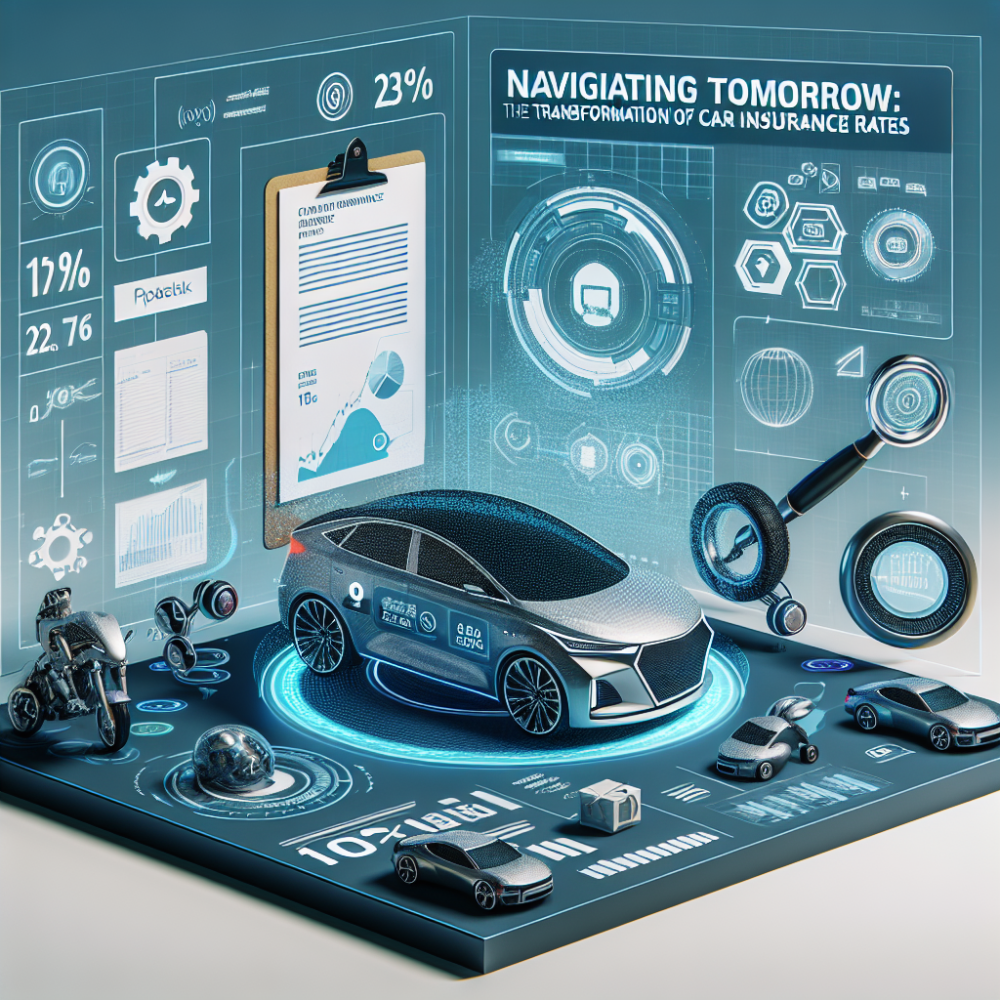Navigating Tomorrow: The Transformation of Car Insurance Rates

Posted on: Saturday, March 2nd, 2024
As we veer into the future, the car insurance industry is poised for significant transformations, influenced by rapid technological advancements, shifting consumer behaviors, and regulatory changes. These elements are reshaping the landscape of insurance premiums, making them more dynamic and tailored than ever before. Innovations such as telematics, artificial intelligence (AI), and the rise of electric and autonomous vehicles are at the forefront of this evolution, promising to make insurance more personalized and potentially more affordable. This guide explores the top trends that are set to redefine car insurance premiums, ensuring consumers and stakeholders are well-informed about what the future holds.
One of the most influential trends is the integration of telematics and data analytics into insurance models. Telematics, the blending of telecommunications and informatics in vehicles, allows insurers to collect real-time data on driving behavior, vehicle usage, and environmental factors. This data-driven approach facilitates more accurate risk assessments, enabling insurers to offer premiums that reflect individual driving habits, potentially rewarding safer drivers with lower rates. As the adoption of telematics grows, consumers can expect more customizable and flexible insurance options, leading to a shift away from traditional, one-size-fits-all policies.
Artificial intelligence (AI) and machine learning are revolutionizing the way insurers calculate risk and process claims. AI algorithms can quickly analyze vast amounts of data, including historical claims and external factors like weather patterns, to accurately predict risk levels and streamline claim processes. This efficiency not only reduces operational costs for insurers but also speeds up the claims process for consumers, enhancing customer satisfaction. Moreover, AI's predictive capabilities are likely to improve premium pricing accuracy, making insurance more accessible and competitively priced.
The emergence of electric and autonomous vehicles presents both challenges and opportunities for the insurance industry. Electric vehicles (EVs), with their simpler mechanics but more expensive components, may initially lead to higher premiums. However, as the technology matures and becomes more widespread, costs are expected to decrease. Autonomous vehicles, on the other hand, pose a unique challenge by shifting the liability from drivers to vehicle manufacturers and technology providers. This shift could result in lower premiums for individual car owners but complexify the insurance landscape as it adjusts to new liability models.
Regulatory changes and consumer expectations are also driving the evolution of car insurance premiums. Governments and regulatory bodies are beginning to establish frameworks to accommodate the unique needs of modern vehicles and driving habits, influencing how premiums are calculated and offered. Additionally, consumers' increasing demand for transparency, fairness, and value in their insurance policies is pressing insurers to innovate and adapt. This dual pressure is catalyzing the industry towards more consumer-centric models, which prioritize the customer experience and offer greater control over premium rates.
In conclusion, the future of car insurance premiums is characterized by greater personalization, efficiency, and adaptability. As technology continues to evolve and integrate into the automotive and insurance sectors, consumers can anticipate a shift towards more customized and potentially cost-effective insurance solutions. The journey ahead for the car insurance industry promises exciting advancements and challenges, with the potential to transform the traditional insurance model in profound ways.